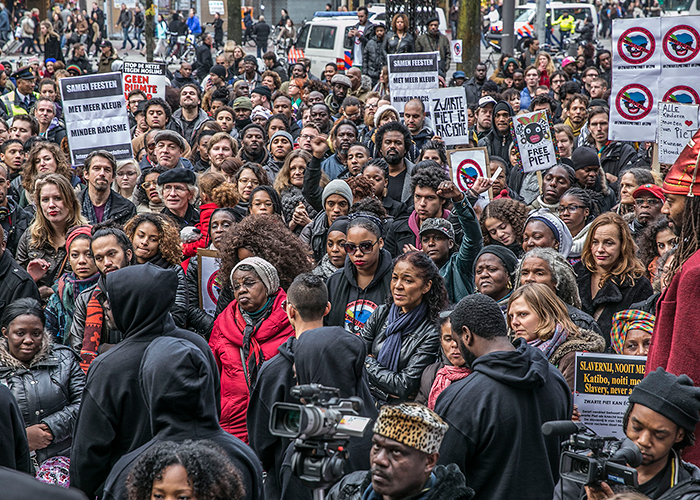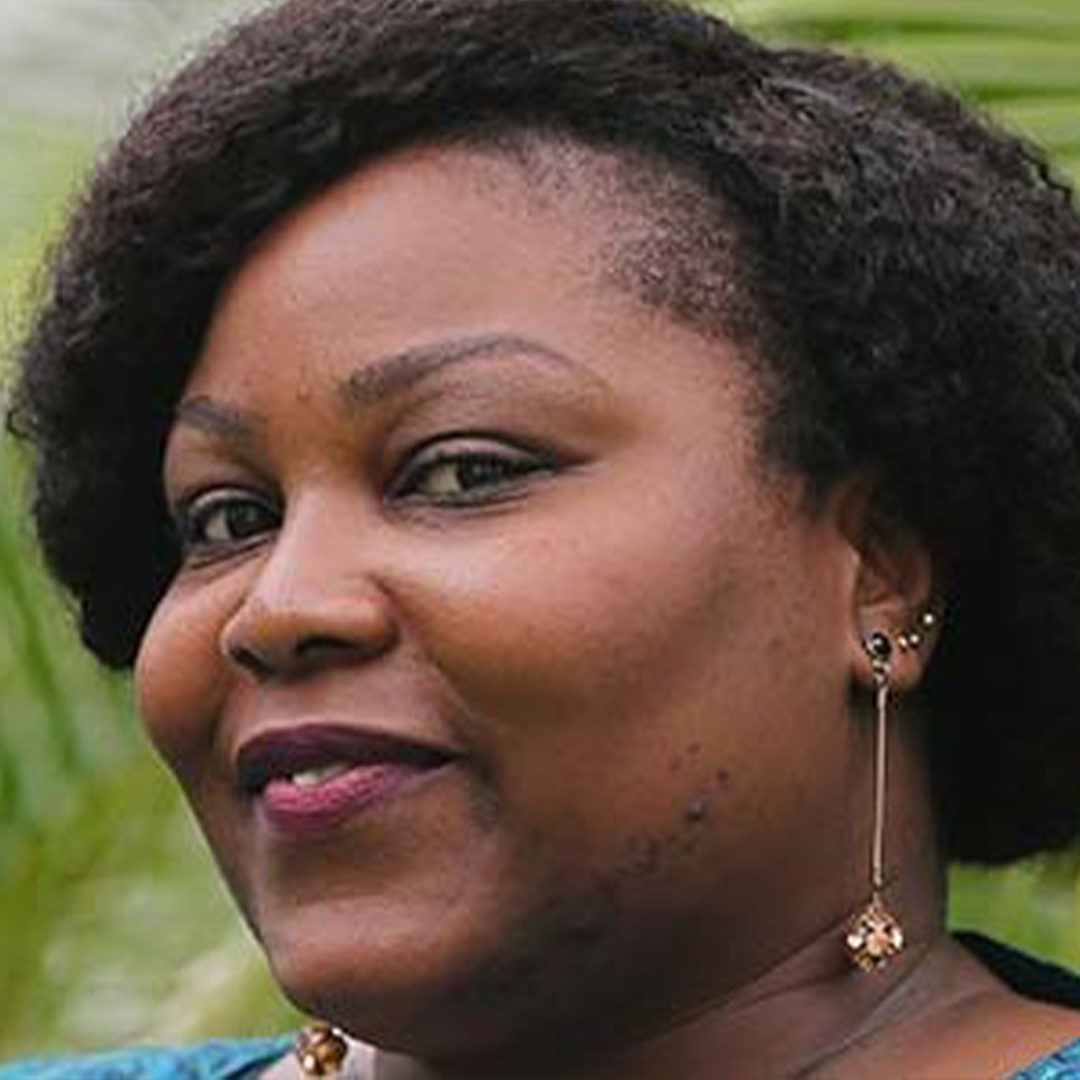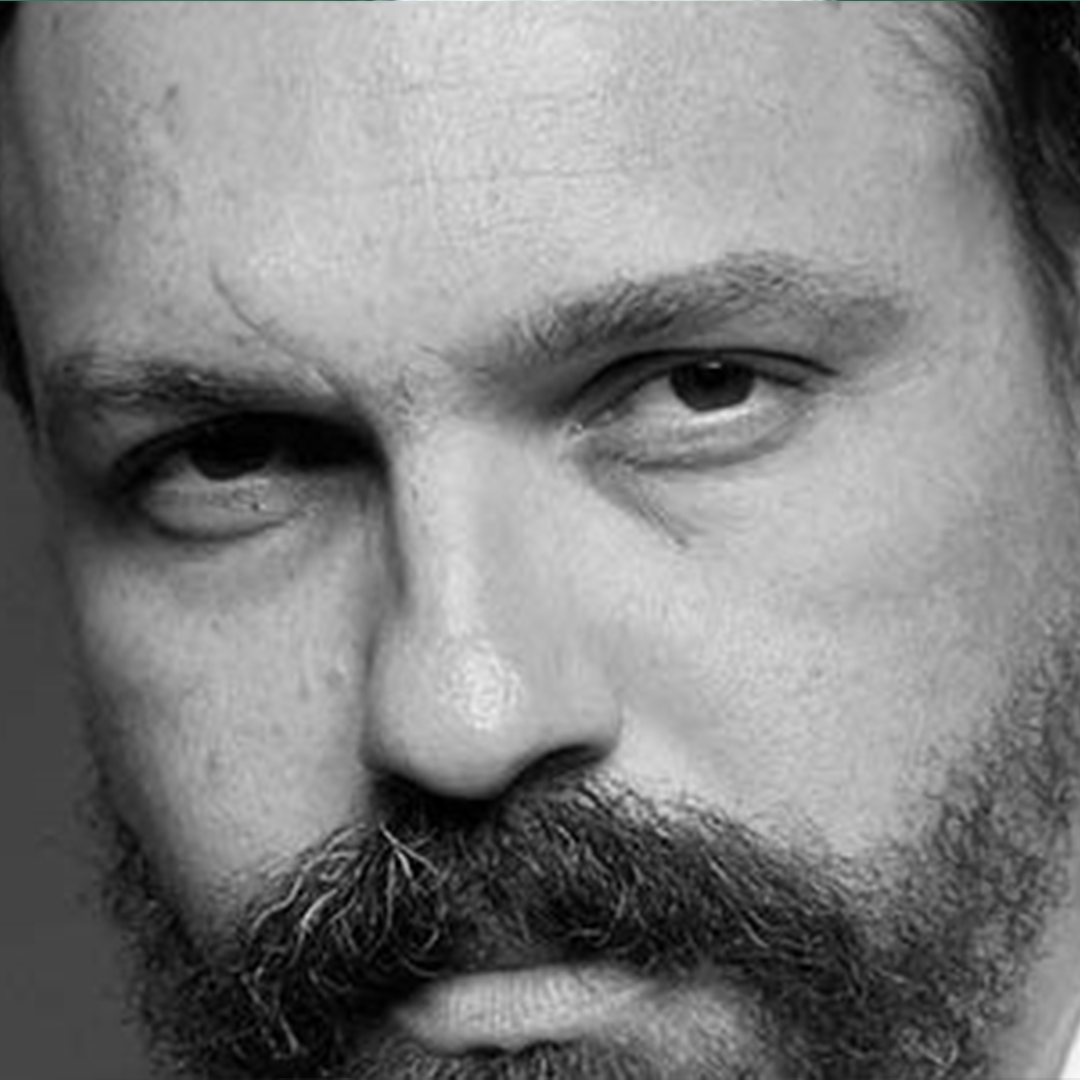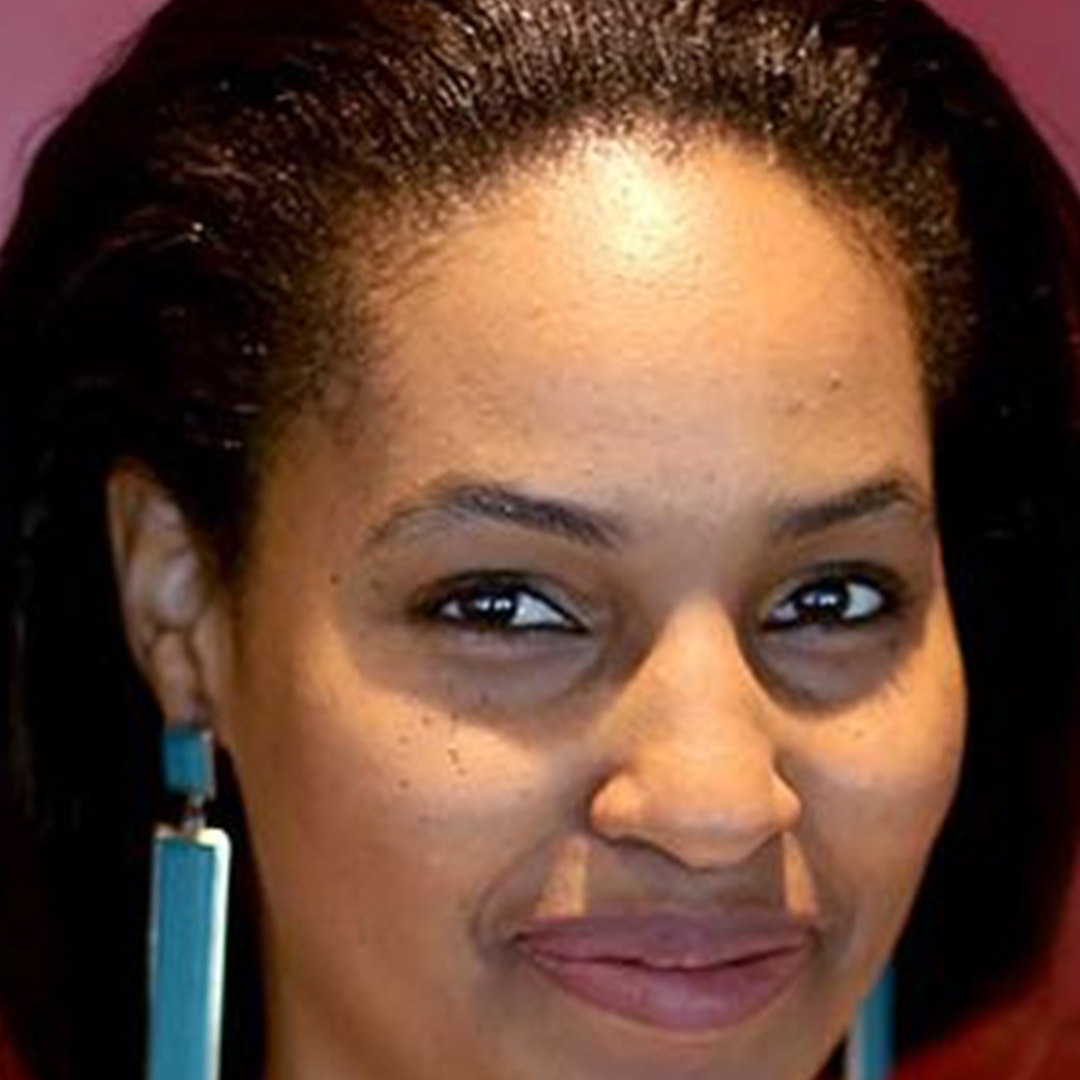20 Dec 16 | Index in the Press
Freedom of expression magazine Index on Censorship has negotiated rights to translate a short story from Haroldo Conti, an Argentine writer who was “disappeared” by the state in the 1970s during the Argentine military dictatorship. Read the full article
20 Dec 16 | Mapping Media Freedom, News and features

Each week, Index on Censorship’s Mapping Media Freedom project verifies threats, violations and limitations faced by the media throughout the European Union and neighbouring countries. Here are four recent reports that give us cause for concern.
11/12/2016 — A photographer for Kommersant newspaper was attacked by anti-LGBT protesters and then harassed by the police. David Frenkel was in St. Petersburg observing an LGBT rights protest and a counter-protest with demonstrators said to belong to the ultra-conservative People’s Liberation Movement (NOD).
Frenkel was attacked by a NOD protester who hit his camera and kicked him. The photographer requested help from nearby police officers but they ignored him. He then phoned the police who arrived at the scene but did not protect him. Instead, the counter-protesters claimed the journalists were disrupting their protest and the officers took Frenkel to the police station along with the demonstrator who attacked him.
Frenkel was accused at the police station of “disrespecting the state and the police”. An officer refused to process his assault complaint against the demonstrator and threatened to report him as mentally ill.
Doctors arrived in an ambulance shortly after, attempting to remove the journalist, which he resisted. The doctors then took the bag containing Frenkel’s camera to which he said, “You have to kill me before you take this bag,” when the doctors replied, “No problem”.
As Frenkel screamed and called for help, surrounding officers took videos of him and laughed. The doctors removed him from the room so he was no longer under surveillance cameras when one started strangling him and the other began tying his hands in a tourniquet.
Frenkel said in a Facebook post, “While doing this, doctors, police officers, and the NOD representative were laughing about me being Jewish; they mocked something about Seder and circumcision…”
Frenkel was released a short time later. Kommersant filed a complaint with the Russian Investigative Committee, demanding an investigation.
10/12/2016 — Taulant Balla, MP for the ruling socialist party in Albania, has suggested changes to the country’s electoral code would would force registration for all online media outlets and give permission to the government to ban all unregistered outlets.
The outlets would have to register under a Media Monitoring Board, which is a temporary body created by the Central Electoral Commission to monitor the TV time allocated to candidates during a campaign. If these outlets were to fall under “electoral propaganda” during elections, then they would be forced to close down.
The proposal states that, “State authorities take measures to close during the election campaign unregistered web outlets who distribute electoral propaganda, carry out polls disregarding the electoral code or go beyond limits of information and are deemed electoral propaganda.”
12/12/2016 — A representative of the British Journalists Union, Alexander McDonald, was denied a visa to enter Turkey to cover the court cases of Evensrel reporters.
McDonald received an email saying his visa was denied but was given no reason. Without the visa, McDonald will not be able to cover the cases against journalists Cemil Ugur and Halil Ibrahim Polat. Since McDonald has been denied, the journalists have been released. They were originally detained for “armed terrorist propaganda” and “membership of an armed terrorist organisation”.
12/12/2016 — Several non-state news outlets reported interruptions to their services and have noticed them occurring for the past several weeks. Since 28 November access to the websites for Radio Free Europe/Radio Liberty and Voice of America was blocked repeatedly.
Meydan.tv and another news outlet based in Berlin experienced the same problems between 28 November and 2 December.
Click on the bubbles to view reports or double-click to zoom in on specific regions. The full site can be accessed at https://mappingmediafreedom.org/
20 Dec 16 | Awards, Press Releases
 Index on Censorship is delighted to announce CNN as its media partner for the 2017 Freedom of Expression Awards.
Index on Censorship is delighted to announce CNN as its media partner for the 2017 Freedom of Expression Awards.
The awards, now in their 17th year, honour those at the forefront of tackling censorship in the field of arts, campaigning, digital advocacy and journalism. Many of the winners face regular persecution for their work, including jail, death threats or harassment.
Award winners are honoured at a gala ceremony in London in April and receive training, promotion and year-long assistance from Index as part of their prize.
Judges for this year’s awards include Harry Potter actor Noma Dumezweni, former Vanity Fair editor Tina Brown and award-winning lawyer Caoilfhionn Gallagher, who represented the families of the victims of the Hillsborough football disaster.
“The media is under threat throughout the world – and not just from ‘traditional’ enemies,” said Jodie Ginsberg, Index on Censorship chief executive. “In Europe, journalists and journalism organisations are under severe pressure. Governments are widening surveillance powers and national security laws in a way that makes investigating corruption and malpractice ever more difficult. In the United States, the language coming from those at the top is painting the media as the enemy.”
“Given the pressures facing the media, it’s great to be working with an organisation that understands and recognises these threats through its work internationally,” she added.
“CNN is proud to support journalism through our extensive affiliate network of over 1,100 broadcast and digital publishers worldwide,” said Greg Beitchman, Vice President, Content Sales and Partnerships, CNN International Commercial. “We admire the work done by the Freedom of Expression Awards and look forward to being part of this important initiative to recognise vital journalism done all over the world.”
In addition to CNN, VICE News has also renewed its sponsorship of the Index awards. In 2016, VICE News journalists Philip Pendlebury and Jake Hanrahan presented the Freedom of Expression Award for Journalism to Zaina Erhaim, a Syrian-based journalist training female reporters. Index had campaigned for Phil and Jake’s release and that of their colleague Mohammed Rasool after they were arrested and imprisoned by Turkish authorities on charges of assisting a terrorist organisation.
Neil Breakwell, London Bureau Chief, VICE News said: “VICE News is proud to support the Index on Censorship awards and the courageous work of journalists, many of whom risk their lives daily to bring us the news.”
He added: “2016 has seen an alarming increase in the arbitrary arrests of reporters, the silencing of dissenting news outlets and threats of violence to media workers around the world. Impartial, fact-based journalism has never been more important and neither has the work of those, like Index, who strive to protect it.”
Previous winners of the Freedom of Expression awards include Nobel Peace Prize winner Malala Yousafzai, Israeli conductor Daniel Barenboim and Russian journalist Anna Politkovskaya. Hundreds of public nominations are made for the awards each year. Many of those nominated are regularly targeted by authorities or by criminal and extremist groups for their work.
The shortlist for the 2017 awards will be announced in early 2017 and the winners will be announced on 19 April at the Unicorn Theatre, London.
For more information, please contact: Sean Gallagher – sean@indexoncensorship.org.
Notes for editors
Index on Censorship, founded in 1972 by poet Stephen Spender, campaigns for freedom of expression worldwide. Its award-winning quarterly magazine has featured writers such as Vaclav Havel, Nadine Gordimer, Arthur Miller, Philip Pullman, Salman Rushdie, Aung San Suu Kyi and Amartya Sen.
Award winners become Index on Censorship Freedom of Expression Award Fellows and receive training and support for a year after the awards to help them maximise the impact of their work.
19 Dec 16 | Europe and Central Asia, Mapping Media Freedom, Netherlands, News and features
[vc_row][vc_column][vc_column_text]
Volkskrant columnist Harriet Duurvoort had received threats before. She often questioned the racist elements of Black Pete (Zwarte Piet) in her columns. Black Pete, a black-faced children’s character, is part of the annual Dutch feast of Saint Nicolas (Sinterklaas) celebrated every 5 December.
The threats usually came through social media. But this time it was different.
It was early December 2015. Her phone rang. There was a male voice on the other end of the line. Before she could ask who he was and how he got her number, the man started shouting at her. He called her a “bitch” and told her to keep her hands off of “our Black Pete”. His rant lasted less than a minute, Duurvoort recalled. “It was terrifying,” she said. “This wasn’t just Facebook or Twitter. This man got hold of my personal phone number, and made an effort to phone me up.”
Duurvoort’s weekly column runs in one of the biggest Dutch dailies, De Volkskrant. That week she had published a commentary for the New York Times – titled Why I changed my mind about Black Pete – in which she described how she experienced Black Pete as a child of Suriname descent. Duurvoort knew her article would stir tension and it was shared widely on social media. “It defines the climate surrounding the Black Pete debate in which we find ourselves,” she said.
For years the character of Black Pete has been causing heated debates in The Netherlands. An activist group collectively using the slogan “Black Pete is racist” began campaigning in 2011. The group aims to change the Dutch perspective on the black-faced character with which Dutch kids had been growing up for decades. But the pledge to change the Black Pete tradition has met with much resistance. Many Dutch citizens consider Black Pete an essential part of their culture and childhood memories and they don’t want to see it changed.
The United Nations committee on the Elimination of Racial Discrimination urged The Netherlands in 2015 to get rid Black Pete because it has racist elements. “Black Pete is sometimes portrayed in a manner that reflects negative stereotypes of people of African descent and is experienced by many people of African descent as a vestige of slavery,” their report stated. The UN urged the Dutch authorities to work on the elimination of racial stereotyping.
A few Dutch cities, schools and TV broadcasters have already reinvented Black Pete by changing the character’s colour and removing it’s big red lips and golden earrings, calling it Pete instead of Black Pete. But the public debate remains fierce. Protest groups in favour of and against Black Pete have clashed on several occasions. People who speak out in the media about the racist elements of the character are increasingly facing threats from Black Pete supporters, mostly through social media.
The well known TV presenter and now politician Sylvana Simons has been subject to a storm of threats ever since she became publicly vocal about Black Pete and racism. A photo-montage of her face in a video showing lynched bodies was shared on social media earlier this year. A popular radio DJ played monkey sounds on his national radio show, saying that Simons should “be quiet,” which created a huge row in Dutch media.
In November this year, the Dutch special Children’s Ombudsman, Margrite Kalverboer, received dozens of death threats by email after she’d published a report on the matter, stating that the Dutch must change the Black Pete tradition because it contributes to bullying and discrimination of black children.
Journalists experience similar threats when writing or tweeting their opinions about Black Pete. Seada Nourhussen, a Dutch-Ethiopian journalist for daily Trouw, saw her Twitter timeline fill up with roughly a hundred hate tweets after she’d posted a photo of little black-faced marzipan pastries being sold at an Amsterdam bakery on 13 November 2016. “Adults who bake these, what kind of a life do they have?” she wrote below a picture she had received from a friend.
“I’m a columnist in a free country without censorship where tensions do sometimes rise high. It’s not easy sometimes”
“It was a nasty, violent, sexsist, racist and Islamophobic mayhem,” she told Mapping Media Freedom. “My whole timeline was filled with mostly angry white men who wished me dead and called me names.” Nourhussen spent hours on blocking and reporting accounts from people who’d threatened her to Twitter. “It lasted for about a week, every day, and then it stopped”, she said. She said she also reached out to Twitter and the police, but neither responded to her.
The hate storm against her started after right-wing politician Martin Bosma (PVV) had reposted a screenshot of her tweet to his thousands of followers. Nourhussen had by then already deleted the tweet. She didn’t want to derail the racism debate towards Dutch bakeries, she said. The popular right-wing weblog GeenStijl republished Bosman’s screenshot in a tendentious article about another bakery in Amsterdam which removed black-faced cakes after someone had sprayed ‘You are racist’ on it’s window, indirectly blaming Nourhussen for it.

Nourhussen is an Africa-editor at Trouw’s foreign news desk. She does not write about the Black Pete controversy for the newspaper and her tweets represent her personal opinion. But she does think being a journalist might make her an easier target for people who are intended to send out hate tweets. “When you have my profession, and also belong to a minority group in a western country, and on top of that being a woman and having an Arabic sounding name, you’re aware that you’re not entitled to express your opinion without consequences”, she said.
It didn’t change the way she writes or tweets, she added. “I’m not afraid,” she said. “Angry is a better description of how I feel”. Nourhussen is disappointed in her colleague journalists at other newspapers and broadcasters who ran the story about her tweet only from the perspective of victimising bakeries that are selling Black Pete pastries, like daily Telegraaf and regional Amsterdam broadcaster AT5. “I’m ashamed to call those reporters my colleagues because they did a terrible job”.
Nourhussen and Duurvoort are not the only ones. The African-American documentary filmmaker Roger Williams who produced the documentary Blackface: Dutch holiday tradition or racism? for CNN in November 2015, also received death threats from Dutch citizens. “I clearly touched a nerve here,” he said in the Dutch TV talkshow RTL Late Night. Among other things he was called “black ape” in emails he’d received. He said that he was astonished by the reactions to his documentary about Black Pete and racism in The Netherlands. “The Dutch are clearly not aware that the black community in The Netherlands is not happy with Black Pete,” he said.
Several incidents with journalists have taken place during Black Pete street protests this year. On 12 November 2016 a reporter for the broadcaster PowNed, Dennis Schouten, was assaulted during a demonstration against organised by activist group Kick Out Zwarte Piet (Kick out Black Pete). Schouten was interviewing protesters when one of them, an anti-Black Pete protester, pushed him onto a moving car. He wasn’t injured and the perpetrator was arrested.
On 26 November Dutch-American journalist Kevin P Roberson was assaulted while reporting on another demonstration against Black Pete in the city of Utrecht. Roberson, owner of the online news portal The Roberson Report, was hit on the head by a Black Pete supporter while he was filming the protest. Roberson had been threatened before, and he’s told Mapping Media Freedom that he fears for his safety. He said that his home address and car license plate number is circulating on right-wing social media groups. “I don’t feel safe anymore,” he added. “I don’t know if I’d risk covering another Black Pete protest to be honest.”
The Dutch Union for Journalists condemned both attacks.
The day that Volkskrant columnist Duurvoort received that threatening phone call, she felt unsafe in her own house. At the time, she contacted the police, but they had told her there was not enough information to start an investigation. A year later she’d rather not think about it too much anymore. And it did not stop her from writing about the controversy surrounding Black Pete.
“I’m a columnist in a free country without censorship where tensions do sometimes rise high. It’s not easy sometimes,” she said. “But it is also part of my job.”
Click on the bubbles to view reports or double-click to zoom in on specific regions. The full site can be accessed at https://mappingmediafreedom.org/
[/vc_column_text][/vc_column][/vc_row][vc_row][vc_column][vc_basic_grid post_type=”post” max_items=”4″ element_width=”6″ grid_id=”vc_gid:1482144241975-569ee181-a8c8-3″ taxonomies=”6664″][/vc_column][/vc_row]
19 Dec 16 | Malaysia, News and features
[vc_row][vc_column][vc_column_text]
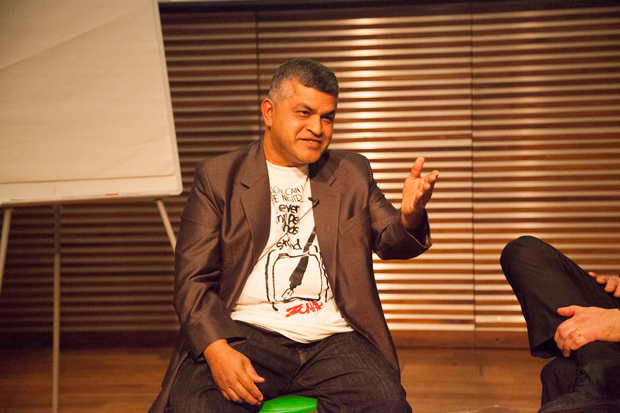
Malaysian cartoonist Zunar is facing charges under a colonial era Sedition Act. (Photo: Sean Gallagher/Index on Censorship)
Malaysian cartoonist Zulkiflee Anwar Ulhaque, aka Zunar, was arrested on Saturday 17 December during a fund-raising event to recoup losses related to the seizure of 20 of his artworks. Police also confiscated 1,000 books during the arrest.
In a statement, the award-winning cartoonist wrote that authorities took him into custody under Section 124 of the country’s penal code for “being detrimental to parliamentary democracy”. Two of Zunar’s assistants were also arrested, as were two of his fans.
“I was questioned for almost six hours and released under bail at midnight. I would have to report back to the police station on the 30 Dec 2016,” Zunar wrote.
The police also said that they would be banning all his books.
It was the cartoonist’s second arrest in three weeks. On 25th Nov 2016, he was arrested under the Sedition Act for his cartoons which are deemed insulting to the country’s prime minister Najib Razak.
The artist was questioned under the penal code under suspicion of intentionally humiliating a person. He was released the next day.
“Even though I have been released, the harassment from the Malaysian government is far from over. I have to report back to the police in Penang on 27 December 2016 for further investigation. And yesterday (26 November), two people who assisted me in organizing the exhibition were also called up by the police for questioning,” the cartoonist said in a statement.
On 25 November Zunar was forced to end his three-day exhibition after only a few hours when a group of “pro-government thugs,” believed to be a part of the United Malays National Organisation, physically assaulted the cartoonist and damaged his displayed work. “They pulled my shirt and threw a punch at me,” Zunar told Index, “but people came and rescued me.”
The Malaysian government has long attempted to silence the cartoonist, who currently is awaiting trial on nine charges of sedition, which carry a potential 43-year jail term, for his cartoons government-critical cartoons. The trial is set for 24 January 2017 and Zunar is currently on bail.
A travel ban was placed on Zunar on 24 June of this year but was Zunar only became aware of the limitation when he was held by immigration police at the Kuala Lumpur International Airport when attempting to leave Malaysia on 17 October.
Zunar has been arrested twice before, once for two days in 2010 for publishing his book Cartoon-O-Phobia, and again for three days in 2015 for violating the Sedition Act.
The Sedition Act, which was put in place to silence opposition to British colonial rule in 1948, has become a popular way for the Malaysian government to silence critical voices such as Zunar. The award-winning cartoonist has been challenging the law for years.
“I can smell that the 10th charge of the Sedition Act is on the way. I am already facing 9 charges under that draconian act and the trial is set to be on 24 January 2017,” Zunar said.
The artist was questioned under the penal code under suspicion of intentionally humiliating a person. He was released the next day.
“Even though I have been released, the harassment from the Malaysian government is far from over. I have to report back to the police in Penang on 27 December 2016 for further investigation. And yesterday (26 November), two peeple who assisted me in organizing the exhibition were also called up by the police for questioning,” the cartoonist said in a statement.
On 25 November Zunar was forced to end his three-day exhibition after only a few hours when a group of “pro-government thugs,” believed to be a part of the United Malays National Organisation, physically assaulted the cartoonist and damaged his displayed work. “They pulled my shirt and threw a punch at me,” Zunar told Index, “but people came and rescued me.”
The Malaysian government has long attempted to silence the cartoonist, who currently is awaiting trial on nine charges of sedition, which carry a potential 43-year jail term, for his cartoons government-critical cartoons. The trial is set for 24 January 2017 and Zunar is currently on bail.
A travel ban was placed on Zunar on 24 June of this year but was Zunar only became aware of the limitation when he was held by immigration police at the Kuala Lumpur International Airport when attempting to leave Malaysia on 17 October.
Prior to 25 November, Zunar had been arrested twice before, once for two days in 2010 for publishing his book Cartoon-O-Phobia, and again for three days in 2015 for violating the Sedition Act.
The Sedition Act, which was put in place to silence opposition to British colonial rule in 1948, has become a popular way for the Malaysian government to silence critical voices such as Zunar. The award-winning cartoonist has been challenging the law for years.
“I can smell that the 10th charge of the Sedition Act is on the way. I am already facing 9 charges under that draconian act and the trial is set to be on 24 January 2017,” Zunar said.[/vc_column_text][/vc_column][/vc_row][vc_row][vc_column][vc_basic_grid post_type=”post” max_items=”4″ element_width=”6″ grid_id=”vc_gid:1482137483571-c06078d4-e22e-2″ taxonomies=”4218″][/vc_column][/vc_row][vc_row][vc_column][/vc_column][/vc_row]
16 Dec 16 | Magazine, Volume 45.04 Winter 2016
[vc_row full_width=”stretch_row” full_height=”yes” css=”.vc_custom_1481647350516{background-image: url(https://www.indexoncensorship.org/newsite02may/wp-content/uploads/2016/12/magazine-cover-subhead.jpg?id=82616) !important;background-position: center !important;background-repeat: no-repeat !important;background-size: contain !important;}”][vc_column][/vc_column][/vc_row][vc_row][vc_column][vc_custom_heading text=”Governments that introduce bans on clothing and other forms of expression are sending a signal about their own lack of confidence” google_fonts=”font_family:Libre%20Baskerville%3Aregular%2Citalic%2C700|font_style:400%20italic%3A400%3Aitalic”][/vc_column][/vc_row][vc_row][vc_column][vc_column_text]
IF YOU HAVE to introduce laws telling your citizens that they are banned from wearing purple, sporting red velvet, or showing their knees, then, frankly, you are in trouble.
But again and again, when times get tough or leaders think they should be, governments tell their people what to wear, or more often, what not to wear.
“Dare to wear this,” they say, “and we will be down on you like a ton of bricks.” Why any government thinks this is going to improve their power, the economy or put their country on a better footing is a mystery. History suggests you never strike up a more profitable relationship with your people by removing the freedom to wear specific types of clothing or, conversely, telling everyone that they have to wear the same thing. We are either consumed by rebellion, or by dullness.
The Romans tried it with purple (only allowed for the emperor and his special friends). The Puritans tried it with gold and silver (just for the magistrates and a few highfaluting types). Right now the governments of Saudi Arabia and Iran ban women from wearing anything but head-to-toe cover-ups along with a range of other limitations. In one frightening case in the past month there were calls via social media for a woman in Saudi Arabia to be killed because she went out shopping “uncovered” without a hijab or abaya. One tweet read: “Kill her and throw her corpse to the dogs.”
Banning any type of freedom of expression, often including free speech, or freedom of assembly, usually happens in times of national angst, economic downturn or crisis, when governments are not acting either in the interest of their people, or the national good. These are not healthy, confident nations, but nations that fear allowing their people to speak, act and think. And that fear can express itself in mandating or restricting types of expression. Generally, as with other restrictions on freedom found in the US First Amendment, enforcing such bans doesn’t sweep in a period of prosperity for countries that impose them.
At different points in world history governments have forced a small group of people to wear particular things, or tried to wipe out styles of clothing they did not approve of. In medieval Europe, for instance, non-Christians were, at certain periods, forced to wear badges such as stars or crescents as were Christians who refused to conform to a state religion, such as the Cathars. Forcing a particular badge or clothing to be worn sends a signal of exclusion. Those authorities are, by implication, saying to the majority that there is a difference in the status of the minority, and in doing so opening them up either to attack, or at least suspicion. Not much has changed between then and now. Historically groups that have been forced to wear some kind of badge or special outfit have then found themselves ostracised or physically attacked. The most obvious modern example is Jews being forced to wear yellow stars in Nazi Germany, but this is not the only time minorities have been legally forced to stand out from the crowd. In 2001 the Taliban ruled that Afghan Hindus had to wear a public label to signify they were non-Muslims. The intent of such actions are clear: to create tension.
The other side of this clothing coin is when clans, tribes or groups who choose to dress differently from the mainstream, for historical religious reasons, or even just because they follow a particular musical style, are persecuted because of that visual difference, because of what it stands for, or because they are seen as rebelling against authority. In some cases strict laws have been put in place to try and force change, in other cases certain people decide to take action. In 1746, for instance, the British government banned kilts and tartans (except for the military) under the Dress Act, a reaction said to be motivated by support for rebellions to return Catholic (Stuart) monarchs to the British throne. Those who ignored the order faced six months in prison for the first instance, and seven years deportation for the second. Those who wear distinctive, and traditional clothing, out of choice can face other disadvantages. For years, the Oromo people in Ethiopia, who wear distinctive clothing, have long faced discrimination, but in 2016 dozens of Oromo people were killed at a religious festival, after police fired bullets into the crowd. And in her article Eliza Vitri Handayani reports on how the punk movement in Indonesia has attracted animosity and in one case, Indonesian police seized 64 punks, shaved their heads and forced them to bathe in a river to “purify themselves”. Recently the Demak branch of Nadhlatul Ulama, Indonesia’s largest Islamic organisation, has banned reggae and punk concerts because they make young people “dress weird”.
Another cover for restrictions or bans stems from religions. As soon as the word “modesty” is bandied around as a reason for somebody to be prohibited from wearing something then you know you have to worry. Strangely, it is never the person who proclaims that there needs to be a bit more modesty who needs to change their ways. Of course not. It is other people who need to get a lot more modest. The inclusion of modesty standards tends to be used to get women to cover up more than they have done.
[/vc_column_text][/vc_column][/vc_row][vc_row][vc_column width=”1/4″][vc_icon icon_fontawesome=”fa fa-quote-left” color=”custom” align=”right” custom_color=”#dd3333″][/vc_column][vc_column width=”3/4″][vc_custom_heading text=”When freedom of expression is quashed, it usually finds a way of squeezing out just to show that the spirit is not vanquished” google_fonts=”font_family:Libre%20Baskerville%3Aregular%2Citalic%2C700|font_style:400%20italic%3A400%3Aitalic”][/vc_column][/vc_row][vc_row][vc_column][vc_column_text]
Then you get officious types who decide that they have the measure of morality, and start hitting women wearing short skirts (as is happening right now in South Africa and Uganda). For some Ugandan women it feels like a return to the 1970s under dictator Idi Amin “morality” laws.
Trans people can find themselves confronting laws, sometimes centuries old, that lay out what people shouldn’t be allowed to wear. In Guyana a case continues to edge through the court of appeal this year, it argues that a cross-dressing law from 1893 allows the police to arrest or harass trans people. A new collection, the Museum of Transology, which opens in London in January, uses a crowdsourced collection of objects and clothing to chart modern trans life and its conflicts with the mainstream, from a first bra to binders.
When freedom of expression is quashed, it usually finds a way of squeezing out just to show that the spirit is not vanquished. So during the tartan ban in the 18th century, there are tales of highlanders hiding a piece of tartan under other clothes to have it blessed at a Sunday service. And certainly tartan and plaids are plentiful in Scotland today. In the 1930s and 40s when British women and girls were not “expected” to wear trousers or shorts, some bright spark designed a split skirt that could be worn for playing sport. It looked like a short dress (therefore conforming to the accepted code), but they were split like shorts allowing girls to run around with some freedom.
While in Iran, where rules about “modest” dress are enforced viciously with beatings, sales of glitzy high heels go through the roof. No one can stop those women showing the world their personal style in any way they can. Iranian model and designer Tala Raassi, who grew up in Iran, has written about how vital those signs of style are to Iranian women. In a recent article, commenting on the recent burkini ban in France, Raassi wrote of her disappointment that a democratic country would force an individual to put on or take of a piece of clothing. She added: “Freedom is not about the amount of clothing you put on or take off, but about having the choice to do so.”
And that freedom is the clearest sign of a healthy country. We must support the freedom for individuals to make choices, even if we do not agree with them personally. The freedom to be different, if one chooses to be, must not be punished by some kind of lower status or ostracism. National leaders have to learn that taking away freedom of expression from their people is a sign of their failure. Countries with the most freedom are the ones that will historically be seen as the most successful politically, economically and culturally.
[/vc_column_text][/vc_column][/vc_row][vc_row][vc_column][vc_column_text]
Rachael Jolley is the editor of Index on Censorship magazine. She recently won the editor of the year (special interest) at British Society of Magazine Editors’ 2016 awards
[/vc_column_text][/vc_column][/vc_row][vc_row][vc_column][vc_custom_heading text=”From the Archives”][vc_row_inner][vc_column_inner width=”1/3″][vc_single_image image=”86201″ img_size=”213×289″ alignment=”center” onclick=”custom_link” link=”http://journals.sagepub.com/doi/pdf/10.1177/0306422016643039″][vc_custom_heading text=”T-shirted turmoil” font_container=”tag:p|font_size:24|text_align:left” link=”url:http%3A%2F%2Fjournals.sagepub.com%2Fdoi%2Fpdf%2F10.1177%2F0306422016643039|||”][vc_column_text]April 2016
Vicky Baker looks at why slogan shirts are more than a fashion statement and sometimes provoke fear within great state machines.[/vc_column_text][/vc_column_inner][vc_column_inner width=”1/3″][vc_single_image image=”89180″ img_size=”213×289″ alignment=”center” onclick=”custom_link” link=”http://journals.sagepub.com/doi/pdf/10.1080/03064220600624127″][vc_custom_heading text=”Miniskirts” font_container=”tag:p|font_size:24|text_align:left” link=”url:http%3A%2F%2Fjournals.sagepub.com%2Fdoi%2Fpdf%2F10.1080%2F03064220600624127|||”][vc_column_text]February 2006
Salil Tripathi believes the press should not pick and choose what to publish based on who will get offended. [/vc_column_text][/vc_column_inner][vc_column_inner width=”1/3″][vc_single_image image=”90622″ img_size=”213×289″ alignment=”center” onclick=”custom_link” link=”http://journals.sagepub.com/doi/pdf/10.1080/03064228908536934″][vc_custom_heading text=”List to the right ” font_container=”tag:p|font_size:24|text_align:left” link=”url:http%3A%2F%2Fjournals.sagepub.com%2Fdoi%2Fpdf%2F10.1080%2F03064228908536934|||”][vc_column_text]July 2001
UK’s Terrorism Act 2000 is further evidence of the government’s indifference to fundamental freedoms – clothing included.[/vc_column_text][/vc_column_inner][/vc_row_inner][vc_separator][/vc_column][/vc_row][vc_row][vc_column width=”1/3″][vc_custom_heading text=”Fashion Rules” font_container=”tag:p|font_size:24|text_align:left” link=”url:https%3A%2F%2Fwww.indexoncensorship.org%2Fnewsite02may%2F2016%2F12%2Ffashion-rules%2F|||”][vc_column_text]The winter 2016 issue of Index on Censorship magazine looks at fashion and how people both express freedom through what they wear.
In the issue: interviews with Lily Cole, Paulo Scott and Daphne Selfe, articles by novelists Linda Grant and Maggie Alderson plus Eliza Vitri Handayani on why punks are persecuted in Indonesia.[/vc_column_text][/vc_column][vc_column width=”1/3″][vc_single_image image=”82377″ img_size=”medium” alignment=”center” onclick=”custom_link” link=”https://www.indexoncensorship.org/newsite02may/2016/12/fashion-rules/”][/vc_column][vc_column width=”1/3″][vc_custom_heading text=”Subscribe” font_container=”tag:p|font_size:24|text_align:left” link=”url:https%3A%2F%2Fwww.indexoncensorship.org%2Fnewsite02may%2Fsubscribe%2F|||”][vc_column_text]In print, online. In your mailbox, on your iPad.
Subscription options from £18 or just £1.49 in the App Store for a digital issue.
Every subscriber helps support Index on Censorship’s projects around the world.
 SUBSCRIBE NOW[/vc_column_text][/vc_column][/vc_row]
SUBSCRIBE NOW[/vc_column_text][/vc_column][/vc_row]
16 Dec 16 | Magazine, Volume 45.04 Winter 2016
[vc_row][vc_column][vc_custom_heading text=”Contributors include Lily Cole, Daphne Selfe, Linda Grant, Bibi Russell, Katy Werlin, Jang Jin-sung, Maggie Alderson and Eliza Vitri Handayani”][vc_row_inner][vc_column_inner width=”1/2″][vc_column_text]
The latest issue of Index on Censorship magazine looks at fashion and how people both express freedom through what they wear. But it also looks at how women in particular have their freedom of expression curtailed by rigid dress codes – whether they are women in Saudi Arabia who have to wear abayas by law or women in the UK and Canada whose employers insist they wear high heels shoes.
[/vc_column_text][/vc_column_inner][vc_column_inner width=”1/2″][vc_single_image image=”82377″ img_size=”full”][/vc_column_inner][/vc_row_inner][vc_column_text]
Models Lily Cole and Daphne Selfe discuss why changes in society are reflected in the clothes we (are allowed) to wear. Maggie Alderson, former editor of Elle describes how she was arrested for being a punk rocker in the 1970s, while Eliza Vitri Handayani talks about how punks in Indonesia today are still persecuted for what they wear and how they look. Nigerian model and journalist Wana Udobang riffs on fashion in Nigeria and how she was snubbed by bouncers and waiters at a wedding for wearing the wrong clothes.
Ismail Einashe describes how traditional dress can be life-threatening for Oromos in Ethiopa, while Magela Baudoin delves into class and ethnic gradations in Bolivia and reveals that the way some women dress means they are discriminated against. Novelist Linda Grant describes how her Jewish immigrant parents used the way they dressed to try and fit into middle-class British society. Meanwhile Katy Werlin gives a historical perspective as she discusses how the 18th century French revolutionaries, known as sans-culottes, celebrated their peasant clothes as they overthrew the aristocratic regime.
Martin Rowson brings another perspective to fashion in his new cartoon which depicts a catwalk on which despots show off their latest costumes. Spot President-elect Donald Trump sporting a furry thong. Trump is also in US media expert Eric Alterman’s sights as he describes why journalists in the USA believe the new president will seek to challenge media freedoms guaranteed by the constitution. Turkish researchers Burak Bilgehan Özpek and Başak Yavcan investigate how the Turkish government is using state advertising to control the media.
We also publish an interview with Turkish intellectual, linguist and founder of a mathematics village Sevan Nişanyan. Our reporter communicated with him using notes smuggled out from the prison where he is serving a 16-year sentence on charges connected with freedom of speech. The culture section includes poems from a former North Korean propagandist Jang Jin-sung who defected to the South and now runs a website smuggling news out of North Korea. We also carry poems about the extraordinariness of everyday life from Brazilian author Paulo Scott and a never before seen English translation of a short story by legendary Argentine writer Haroldo Conti.
[/vc_column_text][/vc_column][/vc_row][vc_row][vc_column][vc_custom_heading text=”SPECIAL REPORT: FASHION RULES” css=”.vc_custom_1481731933773{margin-right: 0px !important;margin-left: 0px !important;border-bottom-width: 1px !important;padding-top: 15px !important;padding-bottom: 15px !important;border-bottom-color: #455560 !important;border-bottom-style: solid !important;}”][vc_column_text]
Dressing to oppress: why dress codes and freedom clash
The censors’ new clothes, by Rachael Jolley: Freedom is not about the amount of clothing you put on or take off, but about having the choice to do so
Fashion police, by Natasha Joseph: Some feel the miniskirt is a threat to the state in Uganda and women are getting attacked for wearing it
Wearing a T-shirt got me arrested, by
Maggie Alderson: Wearing punk clothes in 1970s London was dangerous, but now British teenagers can wear anything
Colour bars, by Magela Baudoin: Traditional clothing is still a sign of social status in Bolivia and wearing such clothes often leads to discrimination
Models of freedom, by Bibi Russell: Bangladeshi women are now vital to the economy but they are still restricted in their dress
The big cover-up, by Laura Silvia Battaglia: Women in Saudi Arabia and Yemen test how far they can customise what they are allowed to wear. Translation by Lucinda Byatt
Rebel with a totally fashionable cause, by Wana Udobang: A Nigerian model refuses to conform to stifling social expectations and sees the consequences
Stripsearch cartoon, by Martin Rowson: A fetching new range of despotwear
Ethiopia in crisis, closes down news, by Ismail Einashe The Oromo people use traditional clothing as a symbol of resistance and it is costing them their lives
Baggy trousers are revolting
, by Katy Werlin: The sans-culottes of the French revolution transformed peasant dress into a badge of honour
Muslim punks in mohawks attacked, by Eliza Vitri Handayani: Punks in Indonesia are persecuted but still manage to maintain a culture which stands up for difference
Design is the limit, by Jemimah Steinfeld: China is loosening up on personal freedoms including fashion, but designers still face some constraints
A modest proposal, by Kaya Genç: “Modest” dress codes are all the rage in Turkey as some turn their backs on the legacy of Atatürk
Uniformity rules, by Jan Fox: Prisoners often try to customise their uniforms but does stripping individuality make rehabilitation more difficult?
Keeping up appearances, by Linda Grant: Linda Grant’s immigrant family were upwardly mobile and bought clothes that showed their aspirations
Sewing it up, by Rachael Jolley: At 88 Daphne Selfe is Britain’s oldest supermodel. She talks about how fashion has changed in her lifetime
Style counsels, by Kieran Etoria-King: Model, activist and actor Lily Cole talks about how school girls customise their uniforms to give them a sense of individuality
Tall stories, by Sally Gimson: Wearing high heels is a way for some women to express freedom, while for others it’s a form of oppression
[/vc_column_text][/vc_column][/vc_row][vc_row][vc_column][vc_custom_heading text=”IN FOCUS” css=”.vc_custom_1481731813613{margin-right: 0px !important;margin-left: 0px !important;border-bottom-width: 1px !important;padding-top: 15px !important;padding-bottom: 15px !important;border-bottom-color: #455560 !important;border-bottom-style: solid !important;}”][vc_column_text]
Challenging media, by Eric Alterman: If his campaign is anything to go by, President Trump is likely to restrict freedom of the press
Living in limbo, by Marco Salustro: A journalist reveals the challenges of reporting from inhumane migrant detention camps in Libya
Follow the money, by
Burak Bilgehan Özpek and Başak Yavcan: The Turkish government is rewarding newspapers which favour its position with more state-sponsored advertising
Fighting for our festival
freedoms, by Peter Florence: Mutilated bodies, petitions and a citizen’s arrest: the director of the Hay literary festivals describes the trials and tribulations of his job
Barring the bard, by Jennifer Leong: Actor Jennifer Leong on confronting attempts to censor performances of Shakespeare around the world
Assessing Correa’s free
speech heritage, by Irene Caselli: The Ecuadorian president’s record on free speech is reviewed as his term in office comes to an end. He gave sanctuary to Wikileaks founder, Julian Assange, in the country’s London embassy but brought in restrictive media laws at home
Framed as spies, by Steven Borowiec: South Korean journalist Choi Seung-ho hit a national nerve when he exposed the security services for framing ordinary citizens as North Korean spies
[/vc_column_text][/vc_column][/vc_row][vc_row][vc_column][vc_custom_heading text=”CULTURE” css=”.vc_custom_1481731777861{margin-right: 0px !important;margin-left: 0px !important;border-bottom-width: 1px !important;padding-top: 15px !important;padding-bottom: 15px !important;border-bottom-color: #455560 !important;border-bottom-style: solid !important;}”][vc_column_text]
Back from the Amazon, by
Paulo Scott: Newly translated poems from Scott’s acclaimed collection, Even Without Money I Bought a New Skateboard. Interview by Kieran Etoria-King. Poems translated by Stefan Tobler
A story from the disappeared, by Haroldo Conti: Jon Lindsay Miles introduces a poignant short story, published in English for the first time, by the award- winning Argentine writer who disappeared in 1976. Translation also by Jon Lindsay Miles
Poems for Kim, by Jang Jin-sung: North Korean propagandist poet turned high profile defector talks about life within the world’s most secretive country. Interview by Sybil Jones
[/vc_column_text][/vc_column][/vc_row][vc_row][vc_column][vc_custom_heading text=”COLUMNS” css=”.vc_custom_1481732124093{margin-right: 0px !important;margin-left: 0px !important;border-bottom-width: 1px !important;padding-top: 15px !important;padding-bottom: 15px !important;border-bottom-color: #455560 !important;border-bottom-style: solid !important;}”][vc_column_text]
Global view, by Jodie Ginsberg: Face-to-face encounters are still important and governments worldwide know that restricting travel continues to be an effective way of stifling voices
Index around the world, by
Kieran Etoria-King: Coverage of Index’s work over the last few months including exposing the difficulties of war reporting and our Mapping Media Freedom project
[/vc_column_text][/vc_column][/vc_row][vc_row][vc_column][vc_custom_heading text=”END NOTE” css=”.vc_custom_1481880278935{margin-right: 0px !important;margin-left: 0px !important;border-bottom-width: 1px !important;padding-top: 15px !important;padding-bottom: 15px !important;border-bottom-color: #455560 !important;border-bottom-style: solid !important;}”][vc_column_text]
Where’s our president? by
Kiri Kankhwende: Malawi’s journalists tease their president as part of a campaign to make the government more transparent
[/vc_column_text][/vc_column][/vc_row][vc_row][vc_column][vc_custom_heading text=”SUBSCRIBE” css=”.vc_custom_1481736449684{margin-right: 0px !important;margin-left: 0px !important;border-bottom-width: 1px !important;padding-bottom: 15px !important;border-bottom-color: #455560 !important;border-bottom-style: solid !important;}”][vc_column_text]Index on Censorship magazine was started in 1972 and remains the only global magazine dedicated to free expression. Past contributors include Samuel Beckett, Gabriel García Marquéz, Nadine Gordimer, Arthur Miller, Salman Rushdie, Margaret Atwood, and many more.[/vc_column_text][vc_row_inner][vc_column_inner width=”1/2″][vc_single_image image=”76572″ img_size=”full”][/vc_column_inner][vc_column_inner width=”1/2″][vc_column_text]In print or online. Order a print edition here or take out a digital subscription via Exact Editions.
Copies are also available at the BFI, the Serpentine Gallery, MagCulture, (London), News from Nowhere (Liverpool), Home (Manchester), Calton Books (Glasgow) and on Amazon. Each magazine sale helps Index on Censorship continue its fight for free expression worldwide.
 SUBSCRIBE NOW[/vc_column_text][/vc_column_inner][/vc_row_inner][/vc_column][/vc_row]
SUBSCRIBE NOW[/vc_column_text][/vc_column_inner][/vc_row_inner][/vc_column][/vc_row]
16 Dec 16 | Magazine, Volume 45.04 Winter 2016
Journalist
Wana Udobang is a multimedia journalist, writer, poet, filmmaker and model working in Nigeria. Her work is at the intersection of women’s rights, human interest stories, culture and art.
Poet
Paulo Scott is a novelist and poet. A former lawyer and activist, he taught law at university for 10 years before moving to Rio de Janeiro in 2008 to become a full-time writer. He has published four books of poetry and four works of fiction. His novel Nowhere People is his first book to be published in English.
Journalist
Kiri Kankhwende is a Malawian journalist and blogger specialising in immigration and politics. She tweets @madomasi
16 Dec 16 | Campaigns, Campaigns -- Featured, Index in the Press, Media Freedom, Statements
This letter appeared in The Times on 16 December 2016
Sir, Index on Censorship has published stories by censored writers for more than four decades. Now we ourselves face the prospect of censorship via legal action in the UK. As it stands, legislation on the statute means that we — as an independent publisher that declines to join the press regulator Impress — face the prospect of crippling legal costs, even if we won a case that had been brought against us. Our publication, to which last month the British Society of Magazine Editors gave an “editor of the year” award for its work, could be forced out of business. Any regulation that could potentially bankrupt the media and make investigative journalism too costly to publish should be fiercely resisted.
Rachael Jolley
Editor
Index on Censorship magazine
16 Dec 16 | Events, Magazine, Volume 45.04 Winter 2016 Extras
[vc_row][vc_column][vc_column_text]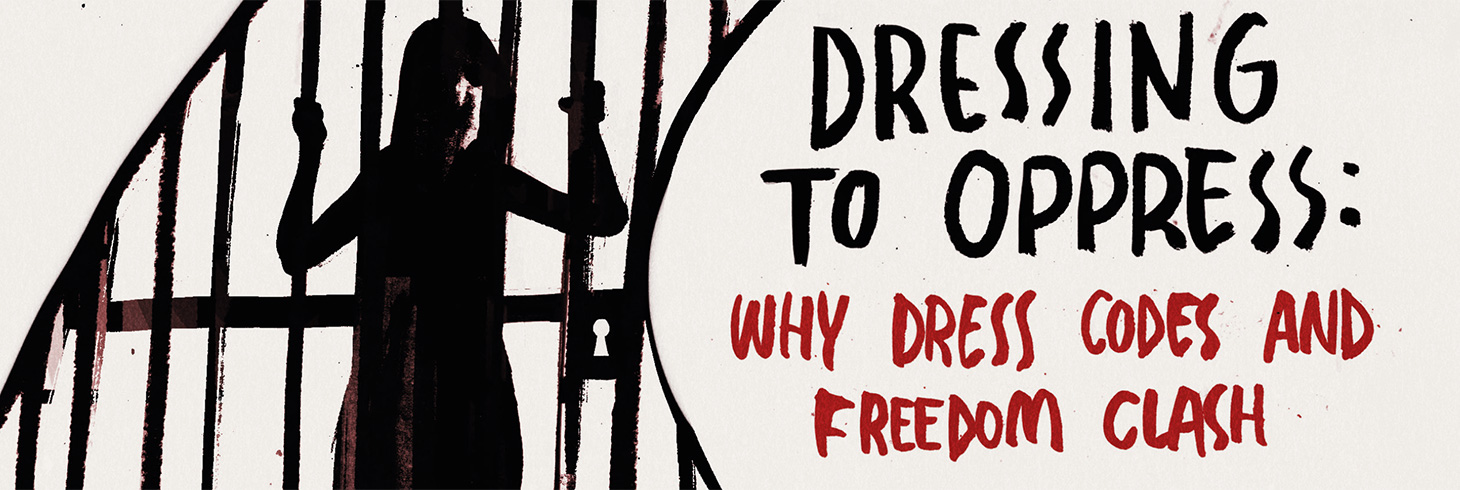
Join Index on Censorship for a drinks reception and conversation to celebrate the launch of our latest award-winning magazine, Fashion Rules, Dressing to oppress: why dress codes and freedom clash. The evening will explore how fashion rules can be used to oppress and how responses can challenge and confront, in the glamorous surroundings of one of Google’s London offices .
We’ll hear from an expert panel, including Maggie Alderson, former editor of Elle magazine, Regina Jane Jere-Malanda, editor of New African Woman magazine, award-winning documentary maker Laura Silvia Battaglia and fashion historian Amber Butchart.
In the upcoming issue, models Lily Cole and Daphne Selfe discuss why changes in society are reflected in the clothes we (are allowed to) wear, while writers from around the world look at indigenous dress in Nigeria, oppression of Indonesian punks today as well as fashion and freedom of expression in Saudi Arabia. Plus, Donald Trump in a fur thong courtesy of cartoonist Martin Rowson, poetry from Paulo Scott and a never before seen English translation of a short story by legendary Argentine writer Haroldo Conti.
Order your high-quality print copy of our fashion special here, or take out a digital subscription from anywhere in the world via Exact Editions (just £18* for the year). Each magazine sale helps Index on Censorship fight for free expression worldwide.
*Will be charged at local exchange rate outside the UK.
Copies are also available at the BFI, the Serpentine Gallery, MagCulture, (London), News from Nowhere (Liverpool), Home (Manchester) and on Amazon. Each magazine sale helps Index on Censorship continue its fight for free expression worldwide.[/vc_column_text][/vc_column][/vc_row][vc_row][vc_column][vc_column_text]
[/vc_column_text][/vc_column][/vc_row][vc_row][vc_column width=”1/3″][vc_custom_heading text=”Fashion Rules” font_container=”tag:p|font_size:24|text_align:left”][vc_column_text]The winter 2016 issue of Index on Censorship magazine looks at fashion and how people both express freedom through what they wear.
Contributors include Lily Cole, Daphne Selfe, Linda Grant, Bibi Russell, Katy Werlin, Jang Jin-sung, Maggie Alderson and Eliza Vitri Handayani.[/vc_column_text][/vc_column][vc_column width=”1/3″][vc_single_image image=”82377″ img_size=”medium” style=”vc_box_shadow” onclick=”custom_link” link=”https://www.indexoncensorship.org/newsite02may/2016/12/fashion-rules/” css=”.vc_custom_1481889636739{background-image: url(https://www.indexoncensorship.org/newsite02may/wp-content/uploads/2016/12/volume-45-04-winter-2016-700×933.jpg?id=82377) !important;}”][/vc_column][vc_column width=”1/3″][vc_custom_heading text=”Fashion Rules” font_container=”tag:p|font_size:24|text_align:left”][vc_column_text]In print, online. In your mailbox, on your iPad.
Subscription options from £18.
Every subscriber helps support Index on Censorship’s projects around the world.
 SUBSCRIBE NOW[/vc_column_text][/vc_column][/vc_row]
SUBSCRIBE NOW[/vc_column_text][/vc_column][/vc_row]
15 Dec 16 | Index in the Press
Bahrain human rights activist Nabeel Rajab, who is facing 15 years in jail for posting tweets “criticising” the government and “insulting” Saudi Arabia, has had his trial postponed for a fifth time. Read the full article
15 Dec 16 | Bahrain, Bahrain Statements, Campaigns, Campaigns -- Featured, Statements
[vc_row][vc_column][vc_column_text]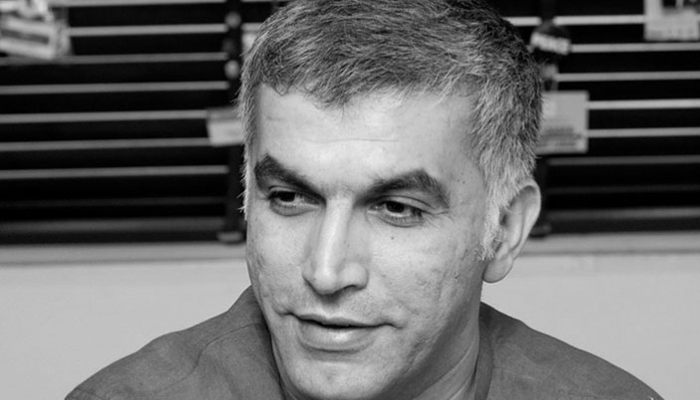
Bahrain’s criminal court today postponed Index Award winner Nabeel Rajab‘s trial to 28 December, when he is expected to be sentenced. The Bahrain Institute for Rights and Democracy spoke to Rajab’s family, who state that today’s trial last 15 minutes, and the judge refused to allow Rajab to speak. Rajab’s pretrial detention, which began with his arrest in June 2016, continues.
The postponement comes a week after British Prime Minister Theresa May and Foreign Secretary Boris Johnson courted Gulf leaders in Bahrain, both failing to raise human rights in their public speeches, just days afters an appeals court upheld the 9-year sentence of political opposition chief Sheikh Ali Salman. The Bahrain Institute for Rights and Democracy and Index on Censorship, alongside other partners, have called on the UK to call for Nabeel Rajab’s release.
Sayed Ahmed Alwadaei, Director of Advocacy, Bahrain Institute for Rights and Democracy: “This is a farcical trial which represents the human rights crisis facing the Gulf. Bahrain’s allies, in particular the US and UK, must publicly call for his release. In particular, the UK has still not called for his release, nor used its leverage to help this clear human rights violation. Failing to do so will help perpetuate injustice, which undermines any potential long-term stability.”
Husain Abdulla, Executive Director, Americans for Democracy & Human Rights in Bahrain: “Nabeel Rajab’s ongoing trial is a reprisal against both him and the entire human rights community in the region. The US should suspend arms sales to Bahrain. The State Department called for his release, but mere words without leverage has so far proved ineffective. Next steps need to be taken.”
Melody Patry, senior advocacy officer, Index on Censorship: “Bahrain’s repeated postponement of Nabeel Rajab’s trial is emblematic of its wider approach to the human rights of its citizens. Arbitrary trials, extra-judicial detentions and outright stripping of citizenship are the Bahraini government’s favourite weapons to silence dissenting voices. Nabeel’s continuing detention is unjust, cruel and a blatant violation to his right to freedom of expression. We call on Bahraini authorities to release him immediately and unconditionally.”
Nabeel Rajab, the president of the Bahrain Center for Human Rights, is being prosecuted on multiple charges of “disseminating false rumours in time of war”, “insulting a neighbouring country” and “insulting a statutory body” under articles 133, 215 and 216 of the penal code. These are in relation to remarks he tweeted and retweeted on Twitter in 2015 about the humanitarian crisis caused by the Saudi-led war in Yemen – with Saudi Arabia the “insulted” country – and documenting torture in Bahrain’s Jau prison. He was first expected to be sentenced in October 2016, but the court instead reopened his case for investigation. In doing so, the court indicated that it had no proof to convict Rajab on, yet refuses to acquit him.
In September, Bahrain’s prosecution brought new charges against him for “undermining the prestige of the state” after the New York Times published his opinion piece, Letter from a Bahraini Jail. This charge could add another year to his sentence. In his letter, Rajab wrote: “No one has been properly held to account for systematic abuses that have affected thousands.” The BCHR estimate around 4000 political prisoners in the country. Rajab also asked: “Is this the kind of ally America wants? The kind that punishes its people for thinking, that prevents its citizens from exercising their basic rights?”
Rajab has been in pre-trial detention since his arrest in June 2016. This extended detention, much of it in solitary confinement, has caused a deterioration in his health, according to his family. The United Nations Standard Minimum Rules for Non-custodial Measures state that “pre-trial detention shall be used as a means of last resort in criminal proceedings, with due regard for the investigation of the alleged offence and for the protection of society and the victim.”
The US has called for Rajab’s release “full stop”, and the EU’s top human rights official yesterday expressed his “hope” for Rajab’s release. In September, the UN High Commissioner for Human Rights used his opening statement at the 33rd session of the Human Rights Council to warn Bahrain: “The past decade has demonstrated repeatedly and with punishing clarity exactly how disastrous the outcomes can be when a Government attempts to smash the voices of its people, instead of serving them.”
The United Kingdom and Bahrain
Pressure mounted this week on the Prime Minister to call for Nabeel Rajab’s release. While Theresa May told parliament at Prime Minister’s Questions this week that “We do raise the issue of human rights when we meet the Gulf states”, the UK Government has never publicly called for the release of any prisoners of conscience in Bahrain.
On Tuesday 14 December, 23 MPs penned a joint letter to the Foreign Secretary calling on the UK Government to demand the “unconditional release” of Nabeel Rajab from prison, and for the charges against him to be dropped. The letter signed by a cross-party group of MPs from the Conservatives, Labour, Scottish National Party, DUP, Liberal Democrats, Green and SDLP, urges the UK Government to follow the lead of the US State Department, the European Parliament, and the United Nations, in calling for Bahrain to release Mr Rajab. The letter said: We urge you, in advance of the trial tomorrow, to make it clear to Bahraini officials that the United Kingdom wishes to see his unconditional release from prison, and for the charges brought against him, which are related to his right to freedom of expression and freedom of speech, to be dropped.
On the same day, rights groups including Index on Censorship and the Bahrain Institute for Rights and Democracy protested outside Downing Street and delivered a letter to the Prime Minister.
Theresa May was in Bahrain last week to set out her new “bold vision” for British-Gulf relations. Human rights was not mentioned in her speech to Gulf leaders, nor by Foreign Secretary Boris Johnson, who was also in Bahrain for a separate security conference.
The Bahrain Institute for Rights and Democracy and Index on Censorship, along with three NGOs also wrote a letter to the Prime Minister: “There is nothing bold in silence over clear human rights violations, and we urge you to now make a public call for Nabeel Rajab’s immediate and unconditional release.”
Further information
This is the latest in a long-running series of cases against Rajab. He had previously been arrested and sentenced in 2012 for his expression. Following his release from Jau Prison in 2014, he went on an advocacy tour of Europe, including to London and Brussels, and participated in the 27th Session of the UN Human Rights Council. On 1 October 2014, he returned to Bahrain, where police arrested him at the airport. He was charged and prosecuted for “insulting” the Ministries of Interior and Defence. This was in relation to a tweet he wrote calling these ministries had acted as an “ideological incubator” for terrorist ideologies, after it that Bahraini ISIS recruits had previously worked in these institutions. Rajab was released on bail a month later, but banned from travel – a ban which remains to date.
In January 2015, a Bahraini court sentenced Rajab to six months in prison, and released him on bail while he appealed the conviction. But he was rearrested in April 2015, when he was charged with two of the three charges he was convicted on today: insulting a statutory body and spreading rumours in war time. Rajab remained in police custody until July 2015, when he received a pardon for the six month sentence. However, despite Rajab’s July 2015 pardon, the charges and travel ban continued to be held against him. In his Letter from a Bahraini Jail, he revealed to the New York Times the threats brought against him: “The head of the cybercrimes unit at the Criminal Investigation Directorate in Bahrain summoned me and my family to a meeting, where — in front of my children — he warned me that if I didn’t stop my advocacy work, I would face up to 15 years in prison.”
Rajab was arbitrarily arrested on 13 June 2015, on the opening day of the UN Human Rights Council’s 32nd Session. His arrest coincided with travel bans on activists, the forced exile of Zainab Al-Khawaja under threat of rearrest, and the dissolution of the Al Wefaq political society.
Following this June arrest, Rajab was prosecuted for the two charges first brought in April 2015, with a new third charge of “insulting a neighbouring country” – Saudi Arabia. Tweets used as evidence against Rajab, seen by BIRD, include documentation of torture and retweets of Amnesty International, Human Rights Watch and Index on Censorship messages.
Rajab was held in solitary confinement for the majority of his pre-trial detention, transferred between West and East Riffa Police Stations. After 15 days in solitary, on 28 June 2016 Rajab required urgent medical attention, after losing a lot of weight and developing an irregular heartbeat and immune system deficiencies. He was transferred back to police custody the following day.[/vc_column_text][/vc_column][/vc_row][vc_row][vc_column][vc_basic_grid post_type=”post” max_items=”4″ element_width=”6″ grid_id=”vc_gid:1481792118745-8ab3d315-aca2-3″ taxonomies=”3368″][/vc_column][/vc_row]
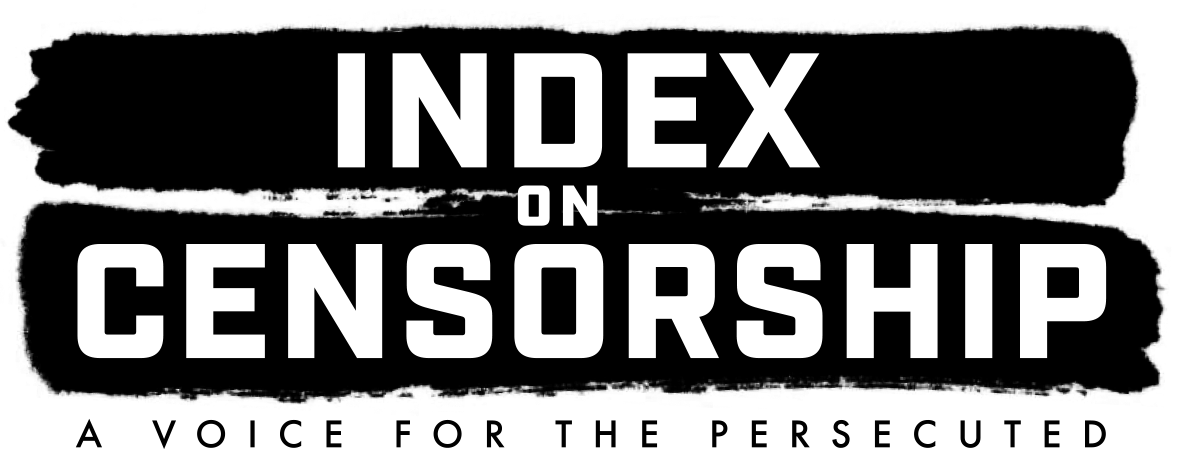

 Index on Censorship is delighted to announce CNN as its media partner for the
Index on Censorship is delighted to announce CNN as its media partner for the 